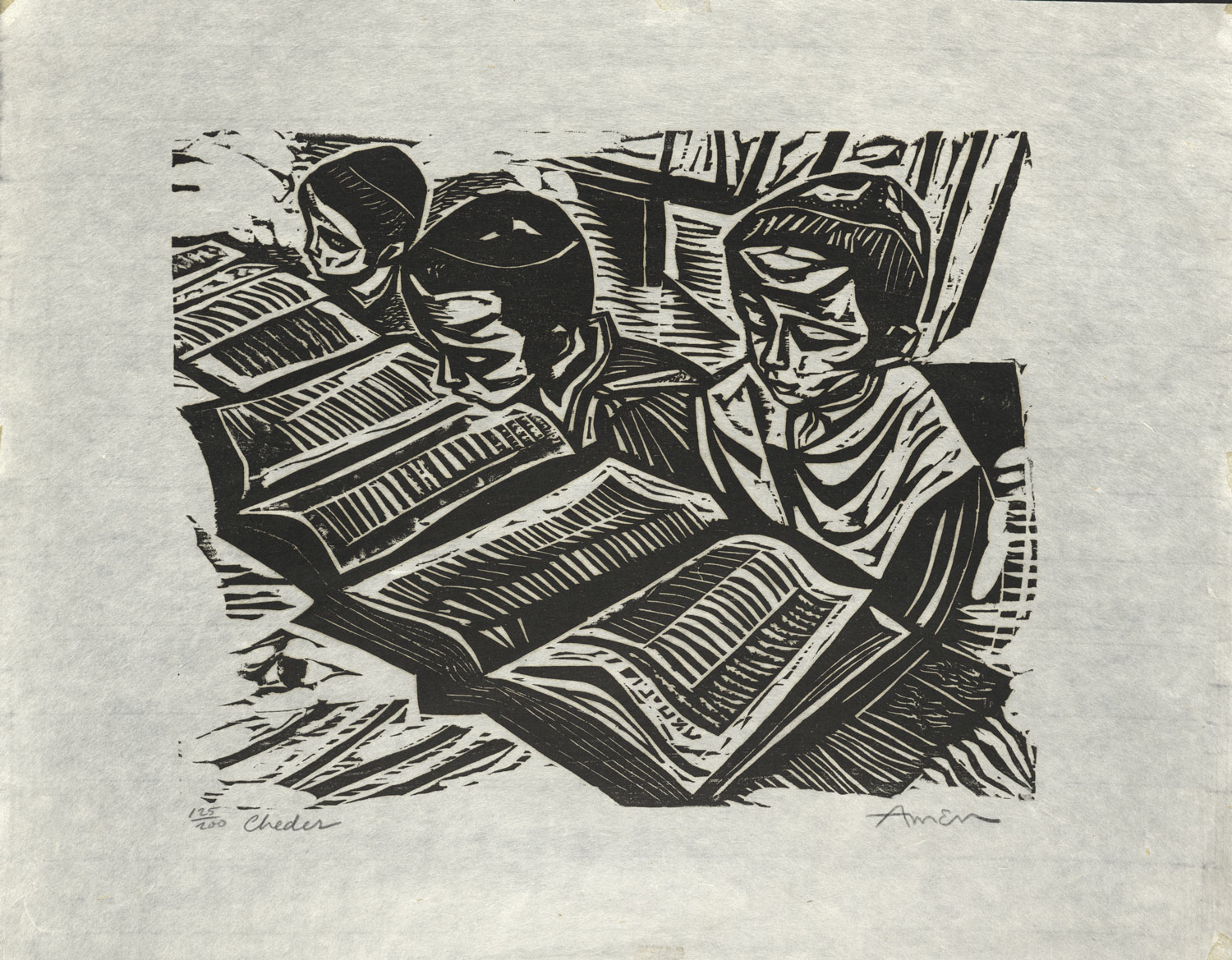This woodcut by Jewish American artist Irving Amen (1918–2011) presents a nostalgic view of a cheder, a traditional Jewish school common across Europe before the end of the 18th century. In such schools, young boys would begin learning Hebrew at the age of five, then move on to studying the Torah, and then to the Mishnah and Talmud, all before completing their educations at the age of 13. Here three young boys sit at a long table immersed in reading large Hebrew-language tomes. The boys would learn these complex books by memorization and reading aloud.
Scenes like this are often described in Yiddish literature and also in English-language stories and memoirs of first-generation Jewish immigrant writers, many of whom encountered these schools firsthand. However, by the time Irving Amen created this woodcut in 1958, such traditional Jewish schools were mostly a relic of the past. By the end of the 18th century, criticism of the system was mounting by Orthodox Jews, who claimed the teachers were not sufficiently qualified, and by Reform Jews, who argued that such schooling isolated Jewish children from their gentile neighbors. In Eastern Europe, cheders continued to exist until the destruction of Jewish communities and traditional Jewish life in the Holocaust.
Jewish artists in America and Israel, such as Irving Amen, created visual representations in various media of these types of scenes. Due to their distance in both time and space from the schools themselves, the scenes they created were mostly nostalgic and lacked the critical and often bitter commentary of many earlier artists and writers.
